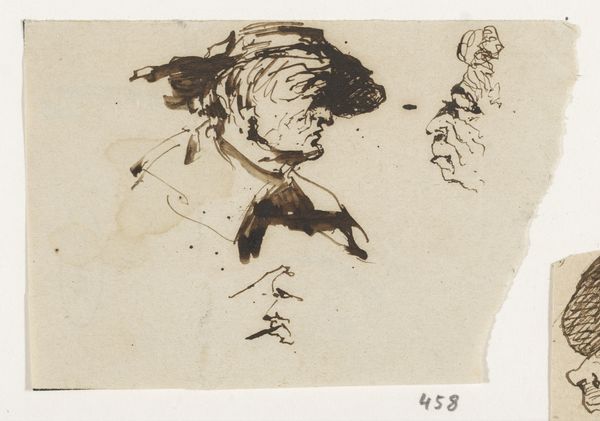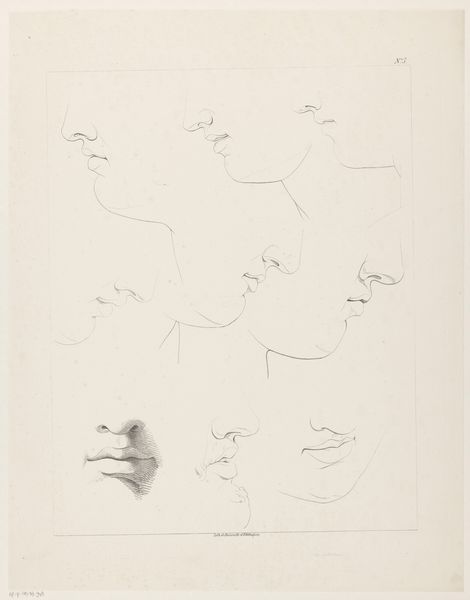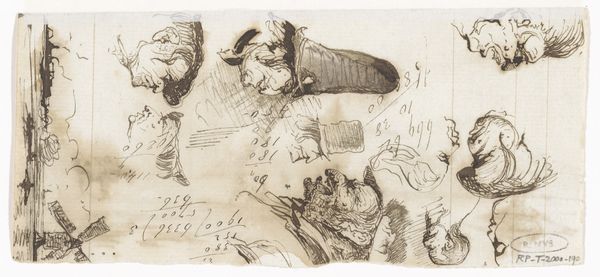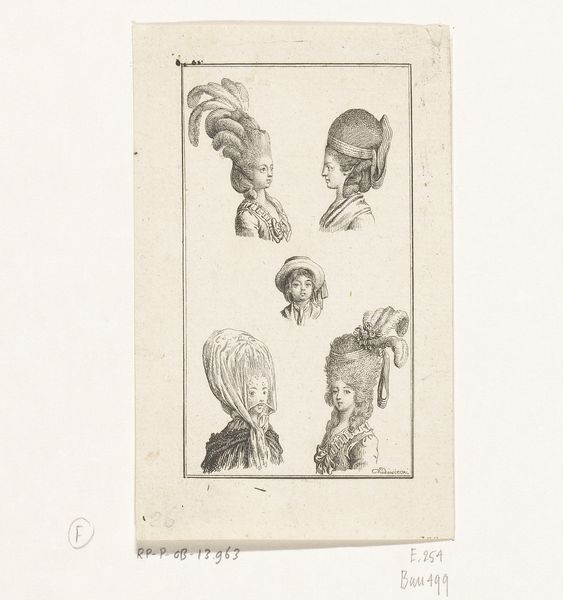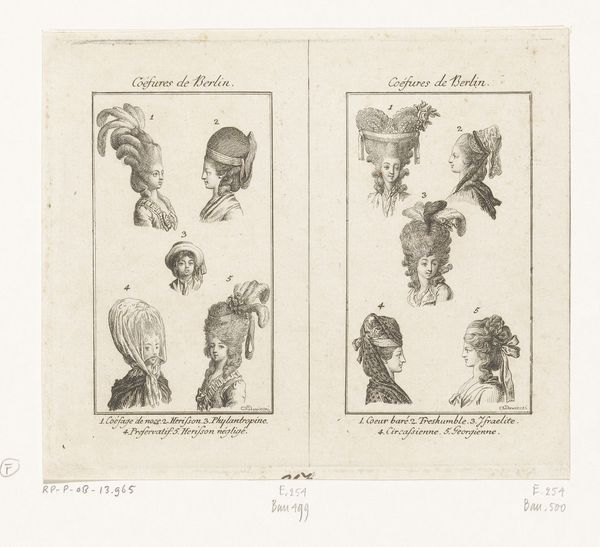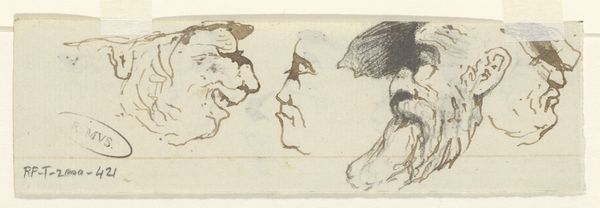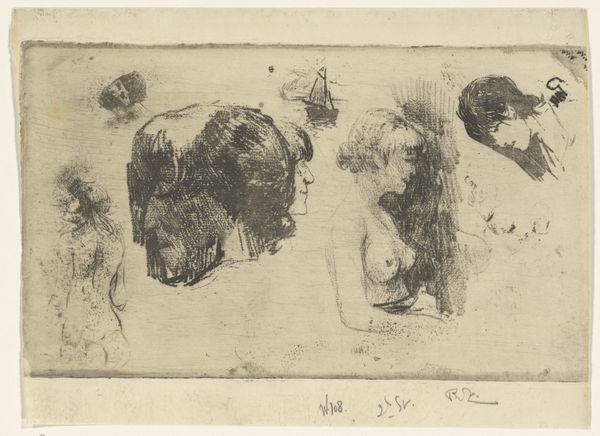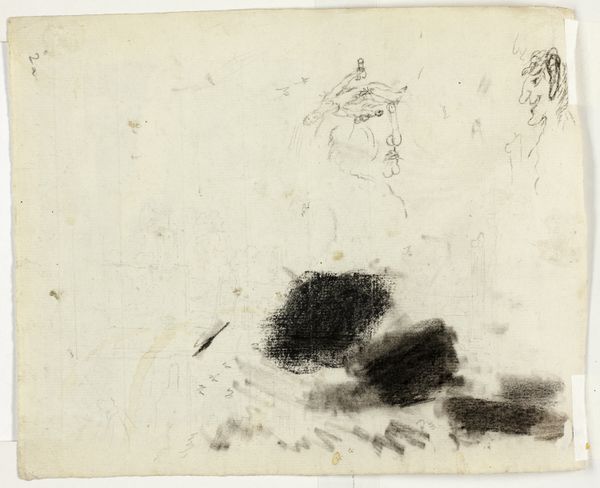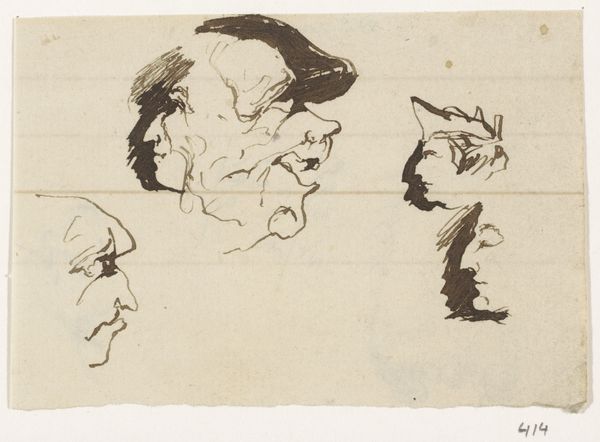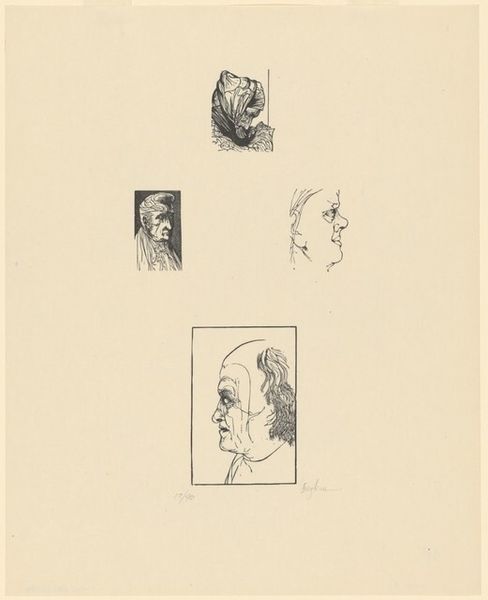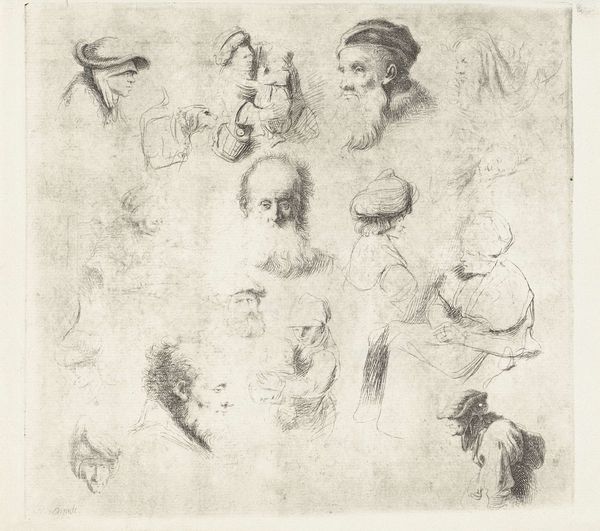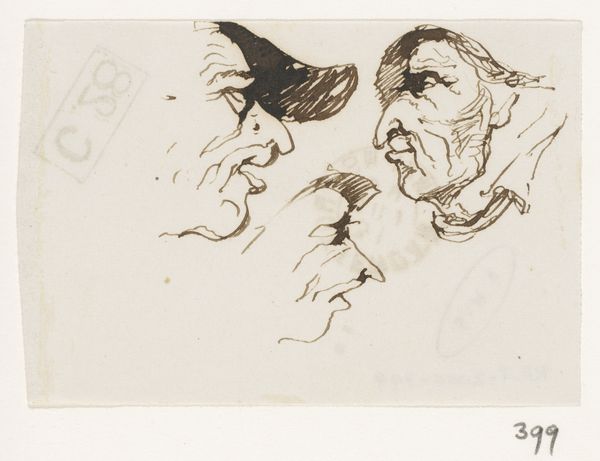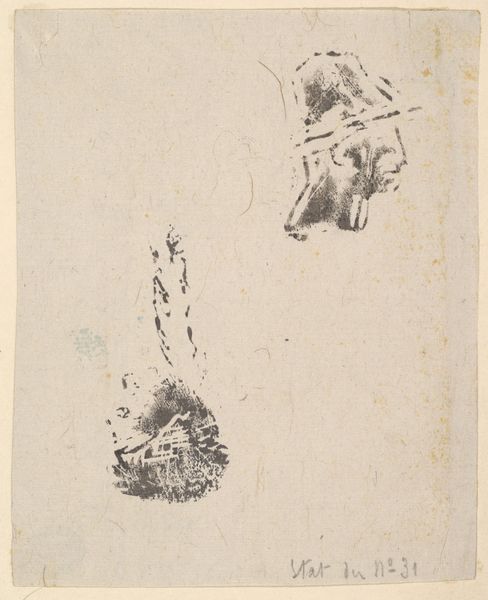
Prøveblad med tre kvindelige silhuetter og to portrætter 1864
0:00
0:00
silkscreen, drawing, print, ink, graphite
#
silkscreen
#
portrait
#
drawing
# print
#
figuration
#
ink
#
ink drawing experimentation
#
geometric
#
graphite
Dimensions: 209 mm (height) x 340 mm (width) (bladmaal)
Editor: This is “Prøveblad med tre kvindelige silhuetter og to portrætter,” which translates to “Sample sheet with three female silhouettes and two portraits” by August Jerndorff, created in 1864 using silkscreen, ink, graphite and other printmaking methods. It seems to be an assortment of sketches, almost like the artist was warming up. What strikes me is the variety of approaches on a single sheet. What do you see here? Curator: Indeed. Seeing this as a ‘sample sheet’ points to the socio-historical context of artistic training. In 1864, artists still relied heavily on academic methods. These sheets allowed artists to practice different techniques and subjects, essentially experimenting within a controlled environment before embarking on a major project. How might the constraints of the academic system at the time influenced such a composition? Editor: It makes sense that artistic training at that time was quite rigid. I guess these 'sample sheets' show that tension - a need for free exploration constrained by traditional techniques and acceptable subject matter like portraits. Curator: Precisely. Consider the placement of the female silhouettes. How do they function, placed between the naturalistic study of fruit and the detailed portraits? Does this suggest something about the status of women and portraiture within artistic conventions? The artist has even noted possible names for the sitters. Editor: That’s a great point. Maybe the artist was experimenting with different ways of depicting women, using stark silhouettes as a contrast to more traditional portraits. It’s interesting that there is some writing too. Curator: Handwriting, often overlooked, gives us another lens. Notice its function—annotation and identification. How do you see that linking into its public role, if any? Editor: I see, it gives the sketches some credibility to the commissioner. Now, looking at the silhouettes again, I wonder if these are also preparatory studies for another piece. It all seems so intentional now, every element placed with care. Curator: Exactly! This close examination illuminates the rich layers within what appears to be a simple "sample sheet," giving voice to historical art training methods. Editor: I’m seeing this sheet in a whole new light now! Thanks to you, I now recognize the significance of “Prøveblad med tre kvindelige silhuetter og to portrætter” as a product of, and a subtle commentary on, its time.
Comments
No comments
Be the first to comment and join the conversation on the ultimate creative platform.
